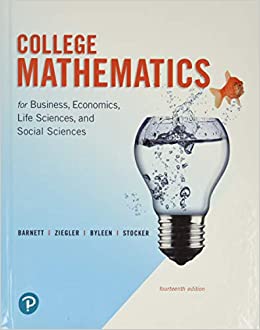I Want the resolution of the attached Problem set
Problem Set 2.A PAYOUT POLICY 1. Little Oil has outstanding 1 million shares with a total market value of $20 million. The firm is expected to pay $1 million of dividends next year, and thereafter the amount paid out is expected to grow by 5% a year in perpetuity. However, the company has heard that the value of a share depends on the flow of dividends, and therefore it announces that next year's dividend will be increased to $2 million and that the extra cash will be raised by an issue of shares, in year 1. After that, the total amount paid out each year will be as previously forecasted, that is, $1.05 million in year 2 and increasing by 5 percent in each subsequent year. a. At what price will the new shares be issued in year 1? b. How many shares will the firm need to issue? c. What will be the expected dividend payments on these new shares, and what therefore will be paid out to the old shareholders after year 1? d. Show that the present value of the cash flows to current shareholders remains $20 million. e. Assume that new shares are issued in year 1 at $10 a share. Show who gains and who loses. Is dividend policy still irrelevant? Why or why not? 2. Hong Kong has an unusual tax system. Dividends and capital gains are not taxable. The Peng Corporation currently pays a quarterly dividend of HK$5 per share. It has 5 million shares outstanding at a price of HK$267. a. What will happen to the share price on the first day when registered owners are no longer eligible to receive the quarterly dividend? b. What will happen to the share price if Peng announces that in the future it will cut quarterly dividends by HK$2 per share and use the cash to repurchase shares instead? c. What if Peng keeps the dividend at HK$5 but uses excess cash to repurchase shares in the open market at the current market price of HK$267? 3. Assume a Modigliani-Miller world. Genron Corporation has $20 million in excess cash and has no debt. The firm expects to generate additional free cash flow of $48 million per year. It has 10 million shares outstanding. Genron decides to use the $20 million excess cash to repurchase shares on the open market. After the share repurchase Genron plans to distribute its annual free cash flow as dividends. Genron's cost of capital is 12%. Show that Genron's share price does not change after the stock repurchase. 4. Company NewGears is currently fully-equity financed and has 10 million shares outstanding. Analysts expect that the company will generate an EBIT of 1.2 million in perpetuity, starting next year. The firm distributes all earnings as dividends. The firm keeps, as a precautionary measure, 3 million in cash and cash equivalents. Assume that: Finance II - Catlica Lisbon School of Business and Economics 1 CAPM assumptions are valid, Beta for assets is 1.5, The risk free rate is 3%, The market risk premium is 6%, No corporate taxes. a. Compute the balance sheet of this firm in market values. Now assume that the company raises 1 million of risk free perpetual debt and uses all its proceeds along with cash and cash equivalents in order to pay an extraordinary dividend today. b.1. Compute the new return demanded by shareholders after this transaction. b.2. Compute the firm balance sheet in market values and show that the share price after issuing the 1 million in risk-free debt but before receiving the extraordinary dividend will be the same as the one implied by a). b.3. Compute the share price after the extraordinary dividend is paid. Use the discounted value of all future dividends to compute it. b.4. What would you change in questions b.2) and b.3) if the company raised the 1 million through a new share issue instead of debt? Show all computations. (The firm still pays an extraordinary dividend of 4 million) 5. Nielson Motors is currently an all equity financed firm. It expects to generate EBIT of $20 million over the next year. Currently Nielson has 8 million shares outstanding and its stock is trading at $20.00 per share. Nielson is considering changing its capital structure by borrowing $50 million at an interest rate of 8% and using the proceeds to repurchase shares. Assume perfect capital markets and no taxes. Which of the following are correct? Select zero or more options: a. Nielson's expected EPS if it remains all-equity is $2.00 b. Nielson's expected EPS if it goes on with the recapitalization is around $2.91(between $2.90 and $2.92) c. Now consider that the 3 possible realizations of EBIT over the next year, all equally likely, are $16 million, $20 million and $24 million. We can be sure that next year's EPS with debt is going to be higher than next year's EPS in the all-equity case. d. Because the firm's EPS is affected by leverage implies that we can always reliably compare these measures across firms with different capital structures. 6. The NewGears Inc has 10,000 shares of common stock having a par value of 100 outstanding. A 10% stock dividend is declared. The fair value of the stock is 110. Finance II - Catlica Lisbon School of Business and Economics 2 a. By how much will retained earnings be reduced? b. What is the par value of the common stock to be issued? 7. The NewHorizon, SA has 50,000 shares of common stock having a par value of 40 per share. The board decided on a 4-for-1 stock split. The market market price of the stock was 50 before the split. What will be the market price per share be immediately after the split? Finance II - Catlica Lisbon School of Business and Economics 3







